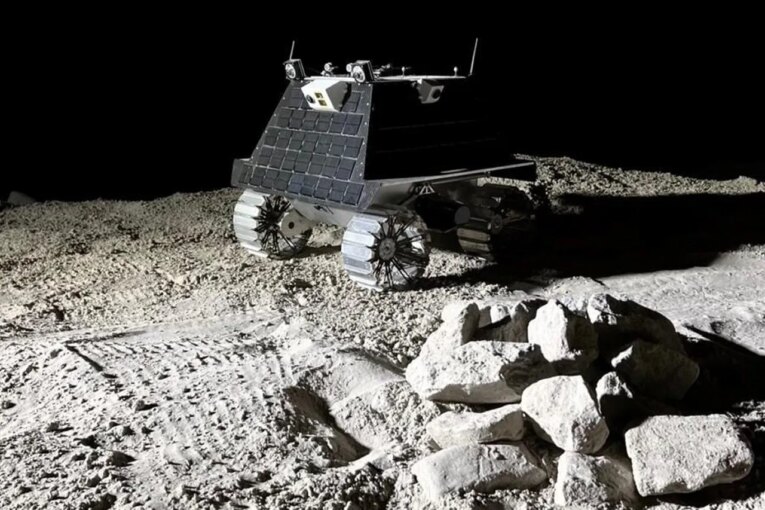
EDMONTON – The Canadian lunar rover could soon help reveal the moon’s dark side.
The country’s first moon rover is set to put the Canadian Space Agency at the forefront of space exploration, helping in the global search for frozen water on the celestial body.
Tidally locked to the Earth, the moon doesn’t spin on its axis but only orbits the planet, leaving the far side permanently dark, cold and unexplored.
“That has always piqued everybody’s imagination: What is on the other side of the moon?” said Gordon Osinski, the principal investigator for the Canadian Lunar Rover Mission.
Osinski’s Canadian team, along with international partners, is preparing to send a 30-kilogram rover to the south polar region of the moonin search of preserved frozen water, possibly a few meters below the surface and mixed into the soil.
The discovery of ice could be a stepping-stone to further explorations of the solar system, including missions staffed by humans, said Chris Herd, a scientific investigator on the mission and University of Alberta planetary geologist.
Herd, who has previously worked on the Mars rover mission, said frozen water “can be extracted and used as a resource for the astronauts to survive.” He said the ice could also be split into hydrogen and oxygen for fuel, reducing the cost of bringing those supplies from Earth.
“It reduces the costs of sending humans to the moon (and) that’s the ultimate goal,” he said.
Osinski said there’s been renewed interest in moon exploration over the last five years, with more emphasis on sending astronauts back there.
The robot rover would play an integral part in realizing that dream, he added.
Christian Sallaberger, CEO of Canadensys Aerospace Corporation, said commercial expansion of the space industry is also playing a big role in reviving interest in revisiting the moon.
In November, Ottawa picked Canadensys to build the lunar rover and help with the scientific instruments meant to be shipped to the moon.
“The costs of the missions have come down, relatively speaking, to what they were in the past,” Sallaberger said. “In the ‘60s, everything was government funded.”
The Ontario space company has been working in partnership with six Canadian universities and several international partners from the United States and the United Kingdom.
Canadensys would be building a robust rover that could handle extreme temperature swings — shifting from -200 C at night to more than 100 C during the day. It would also be able to tackle high radiation and jagged lunar surfaces while continuing to send data throughout the months it spends on the moon.
Working on solar power, the rover would go to sleep every 14 days and then work 24 hours a day, seven days a week, until the next cycle.
Scientists will not only be looking for solid water, but would be investigating the composition of the moon’s rocky surface, characterizing the radiation environment and taking high-resolution images, Sallaberger said.
“(It’s) the preparation for future human missions that this rover would be doing,” he said.
While Canada won’t be the first country to make a landing on the far side of the moon, it could be the first to explore the south pole of Earth’s natural satellite, believed to hold ice water in the permanently shadowed craters.
China became the first country to send its rover, Yutu-2, to the far side of the moon in 2019.
Osinski said there could be other countries launching their rovers to the far side of the moon before Canada’s goes.
But he said it’s still “incredibly exciting.”
“I almost have to keep pinching myself at times,” he said. “It’s everything I’ve been working towards for the last couple of decades.”
Now, he hopes to see the launch of the rover in three years, mounted on top of a rocket — most likely to take off from NASA Kennedy Space Center in Florida.
“Then, a few weeks later, it would land on the surface of the moon. I can’t think of anything more exciting.”
This report by The Canadian Press was first published March 4, 2023.
—
This story was produced with the financial assistance of the Meta and Canadian Press News Fellowship.
does not endorse these opinions.
You can read more of the news on source



